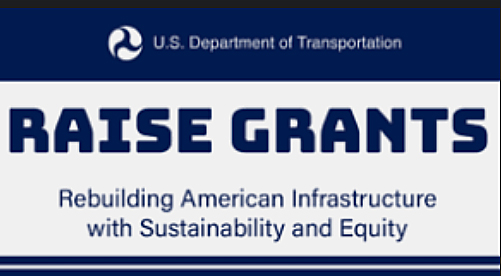Idaho received nearly $30.9M in grant funding August 11 from the Federal government to update, improve and modernize transportation across the Gem State.
The funding comes through the Rebuilding American Infrastructure with Sustainability and Equity (RAISE) program, which helps urban and rural communities move forward on projects that modernize roads, bridges, transit, rail, ports, and intermodal transportation. The Biden-Harris Administration is using RAISE to modernize transportation and make it more affordable, increase safety and strengthen supply chains.
Idaho’s portion is part of more than $2.2B awarded nationwide by the USDOT.
Idaho’s portion includes:
- $12,424,000 to the Idaho Transportation Department for Wood River Valley Mobility Corridor Improvements.
This project will improve transit-oriented infrastructure at four intersections with ID-75 in the Wood River Valley Mobility Corridor: Ohio Gulch Road, East Fork Road, South Broadway Run, and Elkhorn Road. The improvements include bus pullouts, bus stops, passenger shelters, a park-n-ride, sidewalks, shared-use pathways, and shared-path tunnels/underpasses.
- $8,457,000 to Valley Regional Transit for the State Street Premium Corridor.
This project will construct transit, pedestrian, and bicycle facilities along a six and one-half mile section of State Street/SH 44 from downtown Boise to Bogart Lane. This project will include accessible bus stops, on-route charging, real-time bus arrival displays, ticketing machines, lighting, a multi-use path, wheelchair ramps and access, and bicycle and additional street crossings.
- $5,000,000 to the Ada County Highway District for the Access to Opportunity Planning Project.
This will plan and design 12 multimodal transportation projects. The total length of the projects is over 10.5 miles and includes filling in sidewalk gaps, signalizing crossings, implementing ADA accessible pedestrian ramps and signals, building multi-use paths and designated bike facilities, upgrading transit bus stops, and evaluating green stormwater infrastructure to prevent runoff from entering the Boise River.
- $5,000,000 to City of Nampa for Reconnecting Accessibility and Improving Safety and Equity
The City of Nampa will receive $5 million for this planning project which will design local and regional connections to benefit residents in the North Nampa Neighborhood. These improvements include sidewalk network expansion and modernization, shared use path construction, pedestrian pathway extension, a new pedestrian bridge, the replacement of an existing vehicular and pedestrian bridge, the modernization of two railroad underpasses, and the study of new transit services. The neighborhood has experienced over 450 crashes in 6 years, which would be reduced by this project. New public transit stops will connect residents in this underserved community to essential services, grocery stores, schools, churches, and parks. The pedestrian bridge will connect the neighborhood to a farmer’s market located on the other side of railroad tracks and will improve ADA access around assisted-living facilities.
The RAISE program is one of several ways communities can secure funding for projects under the Bipartisan Infrastructure Law’s competitive grant programs.
“ITD is proud to be a sponsor of this incredible opportunity to receive a RAISE grant award for transit enhancements on the Wood River Valley Mobility Corridor,” ITD Public Transportation Manager Ron Duran said. “This grant award looks to bring a fresh perspective to transportation coordination in the state of Idaho.”
“This is a unique collaborative approach, as ITD’s Public Transportation, District 4 and TECM offices all sat at the table with Mountain Rides Transportation Authority to build the vision of this grant application,” said Duran. “This effort highlights what can be accomplished when leaders are willing to think outside the box and work together to find new ways to overcome challenges. This project will increase transportation options and system connectivity.”

